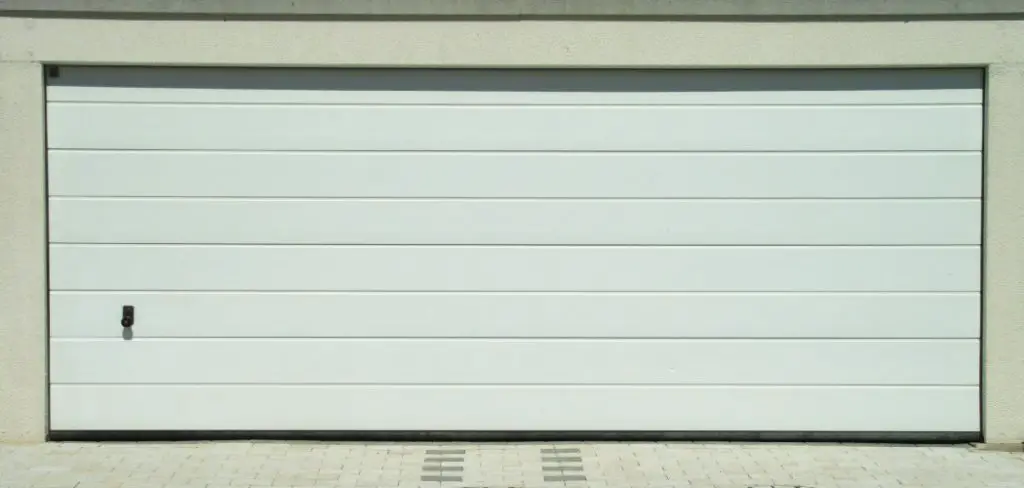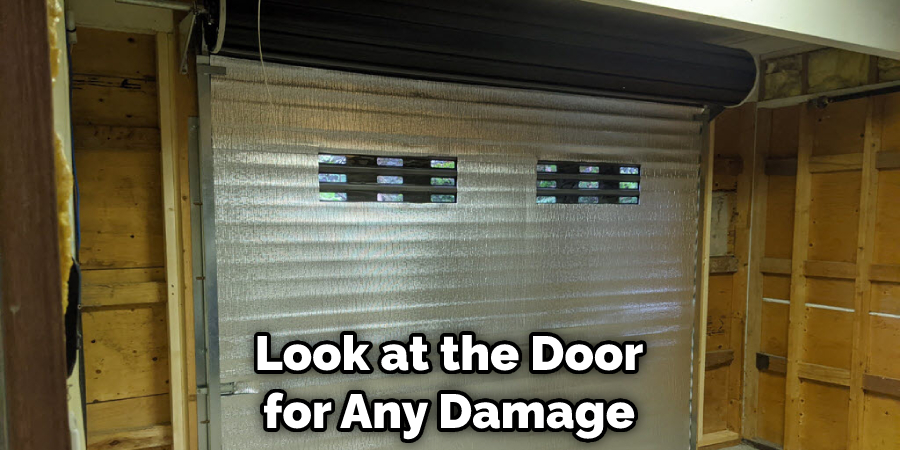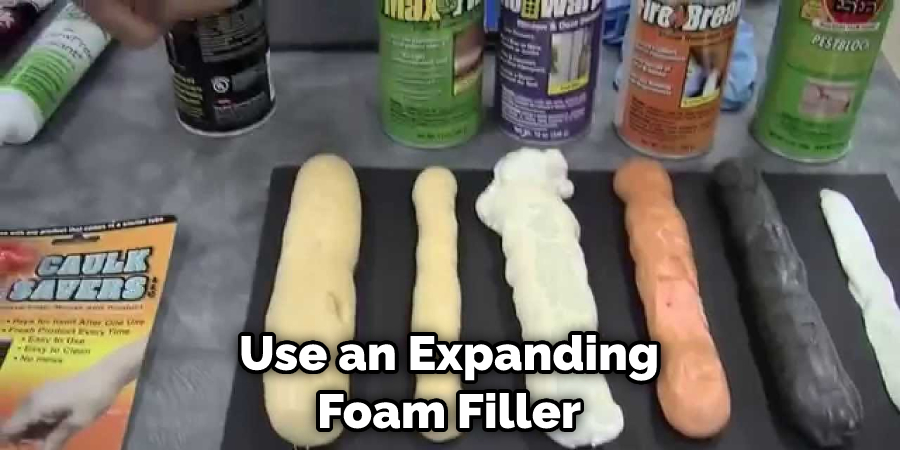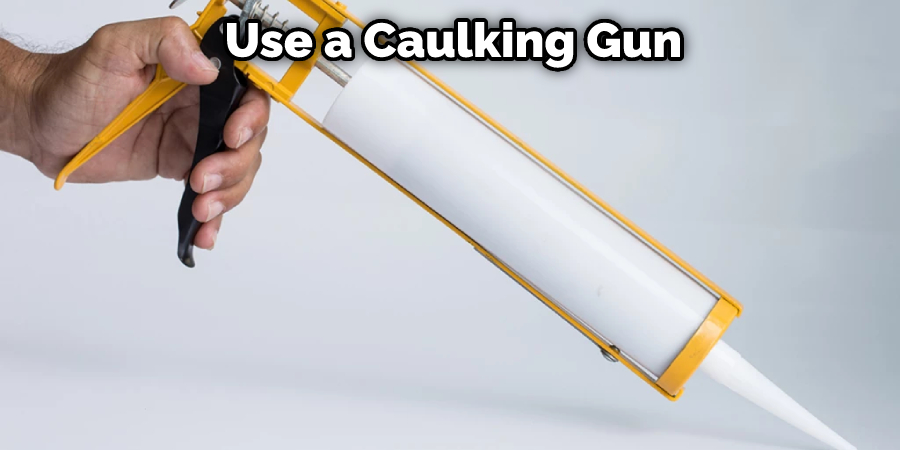Sealing your roll-up garage door is important to keep out dirt, debris, and insects. It also helps protect the door itself from wear and tear caused by weather conditions like extreme temperatures and humidity.

Sealing the edges of a roll-up door with caulk can help improve its insulation properties, making your garage more comfortable during both hot and cold weather. It can also help to reduce energy costs by keeping air from flowing freely in and out of the garage.
One of the major advantages of sealing roll up garage doors is that they provide excellent insulation against the elements. This type of door has no gaps between the door and its frame, so weather outside stays out, and your home stays comfortable inside.
This type of door also provides superior security, as it is difficult for intruders to break in. In this blog post, You will learn in detail how to seal roll up garage door.
How Often Should You Seal Your Roll-Up Garage Door?
The answer may vary depending on the climate and conditions where you live. However, in most cases, it is best to seal your roll up garage door at least once a year. This will help to prevent water damage, rust, and other problems that can occur when the door is not properly sealed. If you live in an area with extreme weather conditions, you may need to seal your door more often.
For example, if you live in an area with high winds, you may need to seal your door every six months or so. Ultimately, the best way to determine how often to seal your roll-up garage door is to inspect it regularly and take action as needed. These simple steps can help prolong your door’s life and keep it looking new.
Materials You Will Need
- Foam weather stripping
- Tape measure
- Pencil
- Utility knife
- Caulk gun and caulking material
Step by Step Processes for How to Seal Roll Up Garage Door
Step 1: Inspect the Door

Before you start, look at the door for any damage or signs of wear and tear. Check that all the screws are tight on the brackets and ensure nothing is bent or broken. Before sealing your roll-up garage door, you need to clean it thoroughly with soap and water. Make sure to rinse off any residue from the cleaning products.
Step 2: Install the Door Seal
Before you start sealing your garage door, you will need to measure and cut the seal according to the dimensions of your door. You should leave a gap of 1/8 inch around the edges to allow for expansion.
Once you have measured and cut the seal, use an adhesive such as silicone or contact cement to attach the seal. Make sure that you spread the adhesive evenly and use a roller or brush to ensure that it is firmly attached.
Step 3: Apply the Sealant
Once the seal has been installed, you can start applying the sealant. Use an acrylic latex caulk or silicone-based sealant around all edges of the door. Start at the top of the door and work your way down, applying a generous bead of sealant in all corners and around the edges.
If your garage door has seams that need to be sealed, you should use foam or rubberized sealant. Apply it along the edges of the door, ensuring that it is evenly applied and there are no gaps or bubbles.
Step 4: Fill in Cracks or Holes
If your garage door has any cracks or holes, you should use an expanding foam filler to fill them up. Make sure to apply the foam generously until all cracks and holes are sealed.

Once you have finished sealing and filling any cracks or holes in your garage door, it’s time to paint it. You can use exterior-grade latex paint to give it a nice and even finish.
Step 5: Install the New Weather Stripping
Once your door is painted and dried, you will need to install new weather stripping. Start at the top of the door and work your way down, ensuring that it fits securely against the sides of the door.
Make sure to inspect all of your work before you close the door. Check that all the screws have been tightened, ensure that the door is sealed properly, and that no air can enter or exit around the edges.
Step 6: Clean Up and Dispose of Waste

Once you’ve finished sealing your garage door, be sure to clean up any excess sealant and dispose of it properly. Make sure to put all unused sealant in a sealed container and store it away from children and pets.
By sealing your roll-up garage door properly, you can help maintain its condition and prevent any potential damage that could occur due to inclement weather or other circumstances. With proper maintenance and sealing, your garage door can last for many years and keep your home safe and secure.
4 Tips for How to Seal Roll-Up Garage Door
- Before attempting to seal a roll-up garage door, checking the forecast to ensure that rain or other inclement weather won’t be an issue while you are working on the project.
- When selecting materials for sealing your roll-up garage door, make sure that you use waterproof materials such as silicone caulk or weather strips.
- Before you begin to seal your roll up garage door, it is important to measure the gap between the door and the frame. This will help you determine how much material is needed for sealing purposes.
- It is important to use a caulking gun to ensure an even, effective seal around your roll-up garage door. This tool will help you apply the material evenly and precisely to create an effective seal. After the sealant is applied, it is recommended that you allow it to dry before attempting to open or close the door.

How Many Coats of Sealant Do You Need to Apply?
This is a question that often plagues those who are looking to protect their investment. Many people believe that more is better when it comes to sealing their garage door.
However, this is not always the case. In fact, applying too many coats of sealant can actually do more harm than good. Finding the right balance between protecting your door and allowing it to breathe is key.
Depending on the climate in which you live, you may only need to apply one or two coats of sealant. If you live in an area with harsh winters, you may need to apply three or four coats.
Ultimately, the number of coats you need to apply will depend on the severity of the weather conditions in your area. Finding the right balance ensures that your garage door will be protected for years to come.
How Do You Inspect the Finished Product?
The only way to be sure is to inspect the finished product yourself. Here are a few tips on how to go about inspecting the finished product:
- Seal Roll-up Garage Door: Check to ensure that the seal around the door is tight and there are no gaps. Also, check to see if the door is level and if there is no light coming through from outside.
- Action Springs: Make sure that the springs are properly installed and tensioned. Also, check for any rust or corrosion.
- Cables and Pulleys: Inspect all of the cables and pulleys for any wear or damaged parts. Make sure that they are all properly lubricated.
- Weather Stripping: Inspect the weather stripping around all of the doors and windows. Make sure that it is in good condition and there are no gaps.
- Roofing: Inspect the roofing materials to ensure they are of high quality and properly installed. Check for any cracks or gaps in the roofing materials.
- Gutters: Inspect the gutters to ensure that they are properly installed and free of debris. Also, check for any leaks. If you find any, repair them immediately.
- Siding: Inspect the siding to ensure that it is properly installed and in good condition. Check for any cracks or holes in the siding material. Repair any damage that you find immediately.
Is It Necessary to Call Any Professional to Seal Roll Up Garage Door?
Yes. Though the process of sealing a roll-up garage door is not very complicated, it is important to take the assistance of professionals. They have experience in understanding the specific type of door and can therefore help identify the areas that need to be sealed.
Furthermore, they possess all the requisite tools and equipment to complete the job quickly and effectively. An added bonus would be getting a professional warranty for any future issues.
Conclusion
The main disadvantage of sealing your roll-up garage door is that it can be difficult to install. It also takes careful attention to detail to ensure the seal is tight, and any gaps or openings will allow air and moisture into the garage, diminishing efficiency.
Additionally, if not installed correctly, a poorly-fitted seal may come loose and require replacement. Furthermore, if you are dealing with an older door, it may be necessary to replace the parts to seal it correctly. Lastly, there is a cost associated with sealing your roll-up garage door that should be taken into consideration.
In conclusion, sealing your roll up garage door can help keep out the elements, and add more insulation and a layer of protection to your home. It’s a simple process that requires minimal tools and materials.
Make sure to measure accurately before cutting any pieces to get the right fit for your application. I hope this article has been beneficial for learning how to seal roll up garage door. Make Sure the precautionary measures are followed chronologically.


